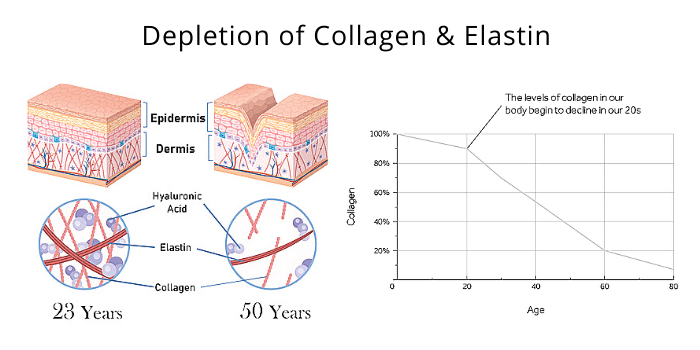As much as we would love for our skin to stay as youthful and elastic forever, our skin ultimately starts to form wrinkles, thin out, lose its elasticity and sag as we age.
The Natural Aging Process

Sagging occurs because the production of collagen, which is your skin’s structural support, decreases over time. In fact, research shows that we lose 1-2% of collagen per year after the age of 25. The loss of this protein causes your skin to sag.
What are the visible signs of aging?
Sagging & loose cheek

Smooth and plump cheeks are the result of abundant amounts of collagen tissues in the skin. However, as you age, the collagen loss leads to less prominent cheeks and the presence of excess skin, particularly in the lower areas of the face.
Loss of deep facial fat

The deep facial muscle between your bone and fat, also known as Superficial Muscular Aponeurotic System (SMAS), loses elasticity as you age. Simultaneously, fat pads and facial muscles lose their volume. This results in sagging skin as your facial muscles are weak.
Loss in bone volume

Like the rest of your body, facial bones also undergo osteoporosis and lose their density as you age. This results in significant changes to your facial bone structure, such as the narrowing of your temples and shortening of your jawline. Your eye sockets also widen which gives your eyes a sunken and ‘hollow’ appearance.
What else contributes to sagging skin?

Besides age, other external factors such as environmental pollutants, UV exposure, poor lifestyle choices (smoking, drinking, or sleep deprivation) and hormonal imbalance can also increase the rate of skin sagging.
